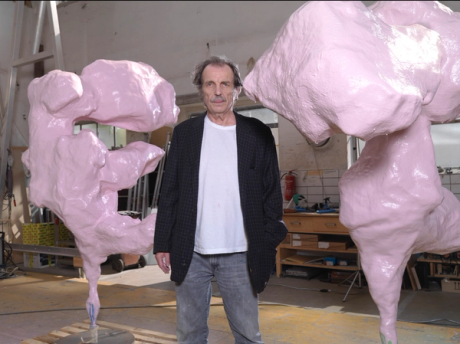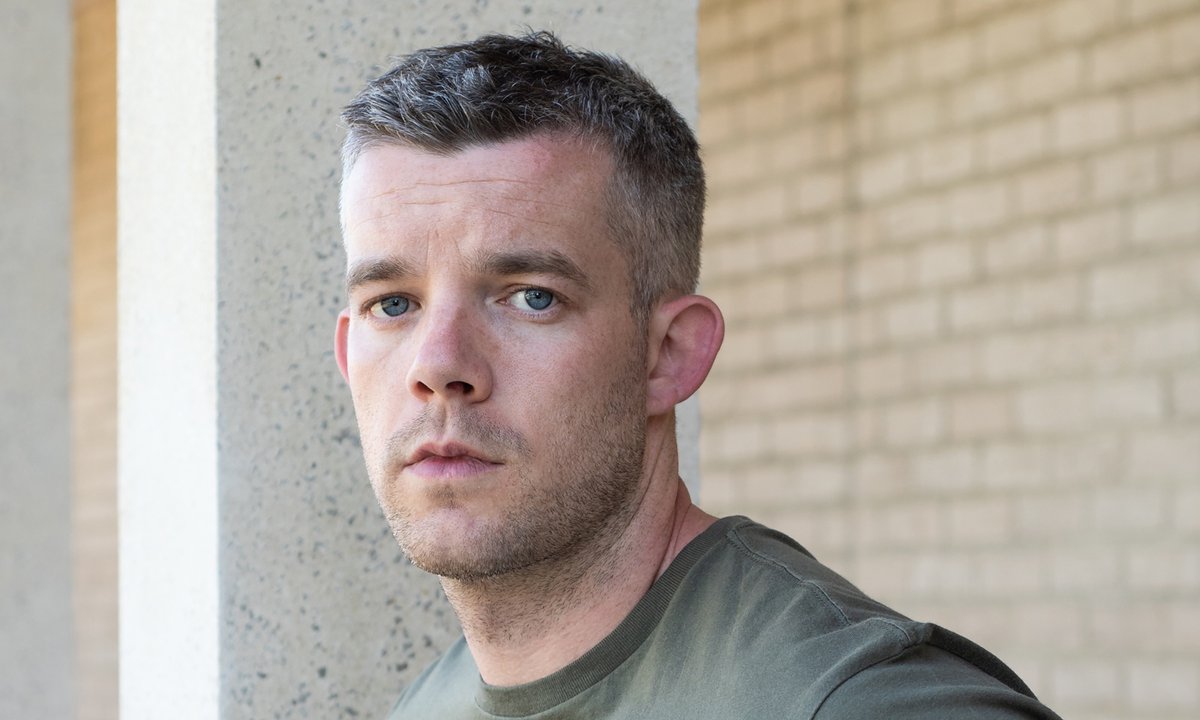Kerosene Triptych
2011 - Drawing & Print (Drawing & Print)
Natasha Wheat
Natasha Wheat’s Kerosene Triptych (2011) is composed of three images, one each from the digital files of the Library of Congress, the Smithsonian Institution, and the Field Museum tropical research archive. The original photographs were taken by anonymous photographers, not as art but as documents of the building of the Panama Canal. The laborers in the images are holding cans of kerosene and spraying it into the foliage. It was a common practice during the building of the canal for American companies and the military to import black workers from the Antilles Islands to spray kerosene to kill mosquitoes and prevent malaria. This practice resulted in massive health problems for the laborers and the disappearance of many species of local wildlife—not just insects but also plants and animals. With this work, Wheat uncovers and generates a space where the movement of objects (the movement of objects being the function of the Panama Canal) takes priority over life, art, and society itself. The coming together of the three images into a single work stands as abstract documentation of sterilization—both cultural and biological.
Natasha Wheat’s diverse body of work explores social experience as a sensual phenomenon that is riddled with hierarchical complexity. Her objects, installations, and interventions engender and disrupt a full range of interpersonal relations. Wheat was the founder of Project Grow, an art studio and urban farming program based in Portland, Oregon, that employed developmentally disabled adults and investigated the intersection of food, ideology, society, and exchange. She earned her BFA from the School of the Art Institute of Chicago and an MFA with an emphasis in social practice from California College of the Arts.
Colors:
Related works sharing similar palette

© » KADIST
Felipe Arturo
2012Primero estaba el mar ( First Was the Sea , 2012) is a system of equivalences between syllables and silhouettes of waveforms cast in cement...

© » KADIST
Gan Chin Lee
2019In Studies of Chinese New Villages II Gan Chin Lee’s realism appears in the format of a fieldwork notebook; capturing present-day surroundings while unpacking their historical memory...

© » KADIST
Kelly Sinnapah Mary
2021Notebook 10 , l ‘enfance de sanbras (The Childhood of Sanbras) series by Kelly Sinnapah Mary is a sequel to an earlier series by the artist titled Cahier d’un non retour au pays natal (2015)...

© » KQED
You Never Thought That Hip-Hop Could Take It This Far | KQED Skip to Nav Skip to Main Skip to Footer Arts & Culture You Never Thought That Hip-Hop Could Take It This Far Pendarvis Harshaw Dec 8 Save Article Save Article Failed to save article Please try again Facebook Share-FB Twitter Share-Twitter Email Share-Email Copy Link Copy Link Black Thought of the Roots performs at the BottleRock music festival in Napa, May 28, 2017...

© » KADIST
Titus Kaphar
2016Although the objects depicted in Titus Kaphar’s diptych 2016/1963 might not be immediately recognizable, the work’s title and the inscriptions ‘Alabama 1963’ and ‘North Dakota 2016’ reveal their use as tools of brutal force...

© » KADIST
Prabhakar Pachpute
2014“Dark Clouds Of The Future” is a cinematographic video animation of the abandoned gold mine in Brazil, Serra Pelada (“Naked Mountain”)...

© » KADIST
Adriana Martínez
2015Her work Al final del arcoiris (At the end of the rainbow, 2015) is a bundle of bills from Chile, Venezuela, Brazil, Colombia, Nicaragua, and Costa Rica, arranged by color to form a tight spiraling rainbow held close with a rubber band...

© » ARTS EQUATOR
Weekly Picks: Singapore (25 February – 3 March 2019) | ArtsEquator Thinking and Talking about Arts and Culture in Southeast Asia Weekly To Do February 25, 2019 Still Life by Checkpoint Theatre , opening 28 February, 72-13 Mohammed Sultan Road What happens when an artist picks up her paintbrush after a long hiatus? Does the body still remember what has been lived? Or are the senses dulled by time, the joints fused with experience? Still Life is an affecting look at life and art-making...

© » THEARTNEWSPER
Supreme court ruling concludes lengthy battle over Franz West estate Art market Museums & heritage Exhibitions Books Podcasts Columns Technology Adventures with Van Gogh Search Search Artist estates news Supreme court ruling concludes lengthy battle over Franz West estate The Austrian sculptor's art will go to his private foundation, represented by Gagosian, overturning previous decision granting ownership to West's widow and children Anny Shaw 18 December 2023 Share Franz West in his studio, 2009 © roessle A long-running inheritance row over the estate of Franz West, reportedly worth more than $50m, has finally been resolved after the Austrian supreme court last month concluded that all of the Austrian sculptor’s art should be donated to the Franz West Private Foundation, which is represented by Gagosian...

© » DAZED DIGITAL
The 50 best K-pop tracks of 2023 | Dazed â¬…ï¸ Left Arrow *ï¸âƒ£ Asterisk â Star Option Sliders âœ‰ï¸ Mail Exit Music Dazed Review 2023 From Jung Kook to NewJeans and aespa, we look back on the K-pop tracks that ruled the last 12 months Text Taylor Glasby 15 December 2023 If the past few years have been focused on expanding K-pop (more global tours and festivals, more English releases), then 2023 was the expansion of the industry’s biggest companies’ interests beyond K-pop itself...

© » KADIST
Leelee Chan
2019Blindfold Receptor (caterpillar-yellow) by Leelee Chan is inspired by the camouflaging nature of the peppered-moth caterpillar...

© » HYPERALLERGIC
National Academy of Design Presents “Sites of Impermanence” Skip to content Willie Cole, “Five Beauties Rising” (2012), suite of five prints, intaglio and relief (courtesy the artist) The National Academy of Design’s new exhibition , Sites of Impermanence , celebrates the contributions of the 2023 Class of National Academicians: Alice Adams, Sanford Biggers, Willie Cole, Torkwase Dyson, Richard Gluckman, Carlos Jiménez, Mel Kendrick, and Sarah Oppenheimer...








